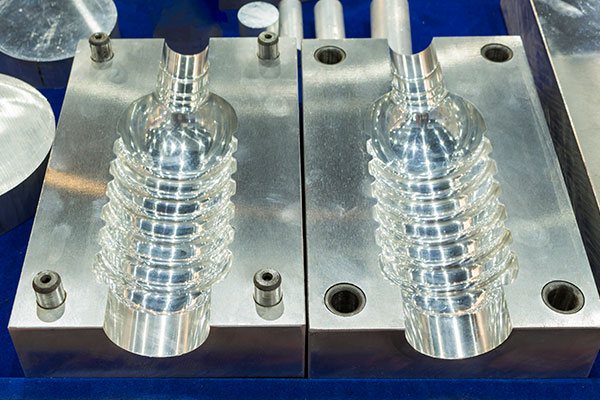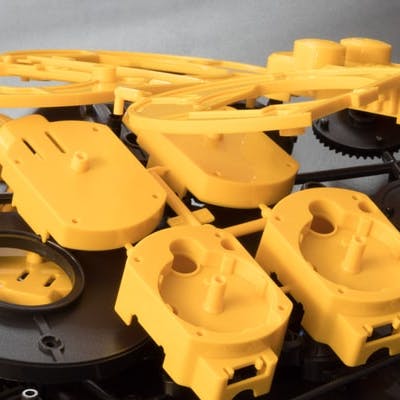Recognizing the Essentials of Plastic Injection Molding Procedures
Plastic injection molding offers as a keystone of modern-day manufacturing, offering a methodical approach to generating complicated elements with precision. Discovering these crucial components might reveal how even small modifications can lead to considerable improvements in manufacturing results, raising questions concerning the capacity for innovation in this established procedure.
What Is Plastic Injection Molding?
Plastic injection molding is a commonly utilized production process that changes thermosetting and polycarbonate materials right into exact and complicated shapes. This strategy is favored for its capacity to produce high quantities of identical get rid of remarkable accuracy, making it a crucial method in numerous sectors, including auto, durable goods, and clinical devices.
The process entails melting the selected plastic product and infusing it right into a mold under high pressure. The mold and mildew, designed to the requirements of the desired part, enables the liquified plastic to form as it cools and strengthens. Once the material has solidified, the mold and mildew is opened up, and the finished component is ejected.
Plastic shot molding uses numerous benefits, including decreased waste, consistency in production, and the ability to include detailed layouts that might be testing with other manufacturing methods. Additionally, it supports a broad series of materials, each supplying one-of-a-kind residential or commercial properties that can be tailored for details applications. As markets continue to innovate, plastic shot molding remains at the center, making it possible for the development of sophisticated items that satisfy progressing customer needs.
The Injection Molding Process
The injection molding process is an advanced strategy that includes numerous crucial stages to create premium plastic elements. At first, plastic pellets are fed into a heated barrel where they are merged a viscous liquid. This molten plastic is after that infused under high pressure into a precision-engineered mold and mildew, which shapes the material right into the wanted type.
Once the mold and mildew is filled up, the plastic is enabled to cool and strengthen, taking the shape of the mold tooth cavity. Air conditioning time is vital, as it influences the cycle time and the last residential properties of the molded part. After sufficient cooling, the mold opens, and the finished part is ejected utilizing ejector pins.
Products Made Use Of in Shot Molding
Different materials can be made use of in the injection molding procedure, each offering distinct homes that satisfy particular applications. One of the most commonly utilized products consist of thermoplastics, thermosetting plastics, and elastomers.

Thermosetting plastics, like epoxy and phenolic materials, undergo a chemical change during the treating procedure, resulting in a stiff, stringent structure. These materials are suitable for applications requiring high warmth resistance and structural stability, usually utilized in vehicle components and electric insulators.
Elastomers, including silicone and rubber-based materials, supply adaptability and resilience. Their distinct buildings make them suitable for applications that require flexibility, such as seals and gaskets.
Additionally, specialty materials like bio-based plastics and composites are getting grip for their ecological advantages and boosted efficiency characteristics, broadening the scope of injection molding applications in different markets. Comprehending the buildings of these products is critical for picking the ideal kind for specific projects.
Advantages of Shot Molding
Shot molding attracts attention as a very reliable production procedure that provides various advantages for producing complex components with accuracy. Among the most significant benefits is the capacity to produce elaborate designs that would be tough or difficult to achieve with various other approaches (Plastic Injection Molding). Read More Here The process allows for tight tolerances and in-depth attributes, making sure top notch elements
Additionally, shot molding is understood for its rapid manufacturing abilities, making it an optimal choice for high-volume production. When the mold is developed, parts can be generated swiftly, a fantastic read reducing preparations and enhancing overall efficiency. This efficiency not just lowers manufacturing costs yet likewise provides a competitive side out there.
The convenience of materials used in shot molding further boosts its appeal. A wide variety of thermoplastics and thermosetting polymers can be used, allowing makers to pick materials that ideal meet their certain needs, including adaptability, strength, and warm resistance.
Moreover, the process reduces waste, as excess product can typically be reused and recycled. This sustainability aspect adds to a minimized ecological impact, making injection molding a responsible manufacturing option. Generally, the benefits of shot molding make it a preferred method for numerous markets.
Aspects Influencing Item Quality
While numerous elements can influence item top quality in injection molding, understanding these aspects is vital for attaining optimum outcomes. Trick facets consist of product selection, refining criteria, and mold and mildew layout.
Product option plays an essential duty, as various polymers show one-of-a-kind properties that affect flowability, toughness, and thermal security. Insufficient material choice can lead to defects such as bending or incomplete dental filling.
Handling specifications, including temperature, stress, and cycle time, should be meticulously regulated. Variants in these settings can result in incongruities in component measurements and surface area coating. Excessively high temperature levels may cause destruction of the polymer, while inadequate pressure can result in brief shots.
Mold and mildew design is similarly essential, as it determines the circulation of the molten plastic and the cooling process. Inadequately created molds might lead to irregular cooling prices, resulting in recurring tensions and dimensional inaccuracies.

Conclusion
Finally, plastic injection molding acts as a crucial manufacturing process that enables the efficient manufacturing of high-grade parts. Proficiency of the shot molding process, including the understanding of materials and the impact of numerous aspects on product quality, is important for achieving optimal outcomes. The benefits of this method, such as cost-effectiveness and design adaptability, more highlight its importance throughout several industries, strengthening its condition as a favored choice for high-volume manufacturing.
Plastic injection molding serves as a keystone of contemporary manufacturing, providing a systematic approach to producing intricate elements with precision.Plastic shot molding provides several benefits, including lowered waste, consistency in production, and the ability to incorporate detailed styles that may be testing with other producing methods (Plastic Injection Molding). As sectors continue to introduce, plastic shot molding stays at the forefront, making it possible for the advancement of advanced products that fulfill progressing customer demands
The shot molding process is an advanced technique that includes several crucial phases to create high-quality plastic elements.In conclusion, plastic injection molding offers as a visit our website vital production process that allows the reliable manufacturing of top quality parts.
Comments on “Plastic Injection Molding: A Comprehensive Overview to Modern Production Techniques”